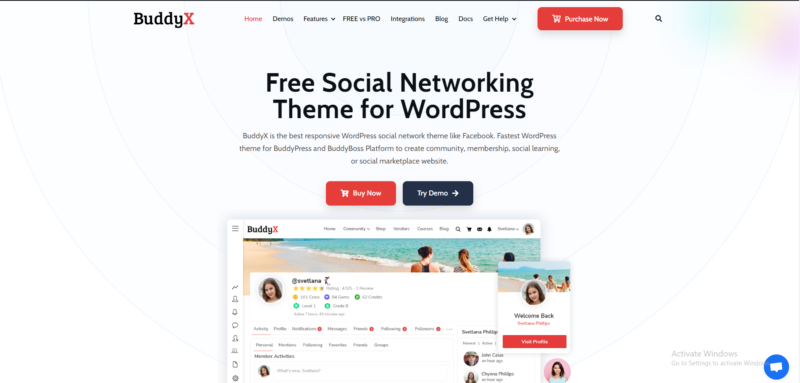The importance of virtual communities is greater than ever in the ever-changing world of digital connectedness. The importance of having strong and captivating online community building tools has increased as we move into 2024. These are the essential tools for building communities, encouraging dialogue, and creating connections across a variety of platforms.
We explore 15 essential online community building technologies that are at the forefront of innovation and efficacy in 2024 in this guide. Every tool included here, from those that facilitate communication and teamwork to those that improve interaction and user experience, is essential to the empowerment of community administrators, moderators, and participants.
In a time when virtual interactions happen everywhere, the resources listed in this list provide a wide range of features to support vibrant virtual communities. Online communities can be built, maintained, and enhanced with the help of these technologies, which are beneficial for companies looking to improve their clientele, artists hoping to build devoted fan bases, and individuals pursuing common interests.
Quick Links
10 online community-building tools your platform needs
1. Buddyx
BuddyX is a creative and adaptable community platform that provides an extensive feature set intended to build lively online communities. It sticks out as a potent WordPress theme designed especially for creating online instructional environments, community forums, and social networking websites. BuddyX has gained recognition as the go-to solution for developing dynamic and interactive online environments because of its extensive functionality and customizable possibilities.

2. Discussion forum
Discussion forums are largely responsible for the origin of online communities. It was thrilling in the early days of the internet to think that you could meet individuals from all around the world by joining chat rooms or discussion forums. Ah, those were simpler times.

Even if discussion forums back then were limited to text, it was still enough to get us excited about meeting new people.
In one way or another, every community still needs the discussion forum as an online resource for fostering community. Furthermore, the majority of community platforms provide this capability. The discussion forum’s primary function is to coordinate discussions. However, since the conversation isn’t typically happening instantly, it might go on for days, weeks, or even years.
The best kind of discussion forum should have great usability, a well-organized structure, and the ability to add media beyond text, such as images, GIFs, emojis, and more.
It’s an essential tool for Community Building .
3. Course platform
Any successful artist worth their salt will tell you that offering an online course is a great method to expand your fan base and assist followers in changing for the better. Thus, you should consider courses in addition to beginning or expanding an online community!

When online courses came out, there were a number of marketing leaders advocating for the “throw it up and forget about it” way of course design, celebrating the passive income that comes with that. Furthermore, even if it sounds good in theory, traditional online asynchronous course completion rates are pitifully low. Because of this, an increasing number of people are searching for courses that offer community participation in addition to being just for them to watch.
This indicates that authors are attempting to add communities to their courses, often by clumsily integrating platforms or launching an auxiliary Facebook group. Users find this bothersome and find themselves focusing on different things. Therefore, the optimal platform to use is one that allows you to do both in one location and effectively integrates community and classes.
4. Spaces
You now have access to the discussion board. Spaces are another useful tool that is related to the forum but distinct from it still. You may get people from the community together in smaller groups around common interests by using spaces. In a community centered around fitness, for instance, you may create subgroups based on topics like motivation, diets, and exercise routines. Those who wished to delve more into any of those topics might become members of those groups and receive more specialized material.
Because they allow you to add sub-products to your community, spaces are an excellent tool for businesses looking to develop online communities. Charging for Spaces can be an upsell for those who opt for it, regardless of whether you charge for access to the main community. For coaches, for instance, who can manage a community yet upsell into private group coaching, this is a significant value gain. Alternatively, within an entrepreneurial community, a subgroup might serve as a means of establishing a high-end, paid mastermind group.
5. App
Having an app is not a luxury in today’s digital world—it is a must. For everyone, an app is the key to convenience and connectedness. An app is the cornerstone for maintaining community connections, gaining access to necessary services, and encouraging involvement. It’s the essential tool that makes sure everyone can connect, share, and contribute with ease while also ensuring smooth interaction and accessibility. Without an app, your community-building software is incomplete; an app is the epitome of convenience and accessibility. In the current era of connectivity and community development, an app is just a fundamental requirement rather than merely an option.
6. Direct messaging & chat
It’s also convenient to be able to move a discussion to group chat or direct messaging once you’ve used the forum feature. As a community host, this is an excellent tool since it allows you to message members with critical information (to ensure they receive it) or respond to inquiries from users who might not feel comfortable asking on the main forum. It also provides an opportunity for members to interact with one another in a more private setting than on the main forum, and it provides you with the groundwork to cultivate genuine friendships within your community.
7. Event Functions
By enabling quick, private, and easy contact between people or groups on a variety of platforms, direct messaging and chat have completely changed the way people communicate. Real-time communication, file sharing, and teamwork are made possible by these tools, which can be accessed through social media apps like Facebook Messenger and WhatsApp or specialized websites like Slack and Microsoft Teams. They promote personal connections, speedy information transfers, remote job assistance, and improved customer support. These discussions are made even more enjoyable by the addition of emoticons, gifs, and stickers, which give additional levels of expression. Direct messaging and chat are still essential to current interactions because of the growing reliance on digital communication. They help to link people all over the world and overcome geographical barriers.
8. Member Profiles
The opportunity for users to construct their own profiles to highlight their identity and passions is one community-building element that makes a platform truly fantastic. Members can locate others who share their passions and discover more about each other than just their names with this fantastic feature! (A Mighty Network even allows you to know who is nearby!)
9. Live Streaming
Although it’s a relatively new function, live streaming is quickly becoming a go-to method for community hosts to engage with their members. Members adore live streaming because it gives the rhythm of your group a little more spontaneity. You will hesitate awkwardly and use words like “ums” and “ahs” when live streaming. And what do you know? That is incredible! Because live broadcasting is genuine, people adore its flaws.
10. Plan Options
In the community management space, offering a variety of plan options is a useful monetization technique. In addition to meeting the various demands of community members, value-added services, tiered memberships, and various subscription models also present opportunities for income generation. Offering a range of options enables flexibility in accommodating varying user preferences while opening doors for long-term revenue generation, whether it’s through the provision of specialized access, premium features, or exclusive content. Furthermore, these choices not only improve the user experience overall but also encourage participation and dedication in the community, creating a vibrant ecosystem that benefits all parties involved.
5 Online community-building tools: software options
1. Zoom
Zoom is a video conferencing program that can be used for webinars and one-on-one meetings, in case you missed its meteoric climb to popularity during the pandemic. It’s a crucial instrument for fostering community. Zoom functionality is integrated into every Mighty Network, and with just a single click, you can create an event in your network that will instantly generate a Zoom meeting link.

Zoom provides options for screen sharing, which is valuable for presentations, collaborative work, and demonstrations. It allows participants to share their screens, fostering better understanding and communication among attendees.
Zoom has made it easier to communicate remotely, but it has also raised questions about security and privacy. The organization has consistently strived to improve security protocols in order to guarantee the safety of user information and stop unwanted access to meetings.
2. Calendly
Although Calendly is really meant for one-on-one meetings rather than community development, it’s still a useful tool to have on hand for when someone asks, “Hey, can we chat?” It’s likely that aligning calendars is half the struggle when it comes to scheduling, and Calendly takes care of this for you.

With Calendly’s customization tools, customers may add fields or questions for guests to fill out when booking, tailor their scheduling pages to fit their brand, and provide buffer times between meetings to prevent consecutive appointments.
Calendly provides team scheduling tools for businesses, allowing numerous team members to jointly manage appointments, schedule group meetings, and coordinate their availability. Sales teams, customer service departments, or any other department requiring coordinated scheduling efforts would find this especially helpful.
3. Facebook groups
Although Facebook Groups aren’t the best option for creating online communities, some people start with them because they’re simple to use and free. If you’re not yet ready to invest in a specialized community platform, this could be a good place to start, even though you could find it difficult to maintain momentum and outwit the algorithm.
![]()
Facebook groups are online communities situated within the broader social media network that facilitate user interaction around common interests, pastimes, convictions, or objectives. They act as hubs where people congregate, interact, and have conversations about particular subjects, establishing a feeling of community and belonging.
The topics that these clubs focus on range greatly, from general ones like cooking, exercise, and travel to more specialized ones like vintage book collecting, rare plant lovers, or neighborhood-based organizations. Users have the option to join private groups, which provide a more exclusive environment for members to engage, or public groups, where discussions and content are open to all users.
4. Udemy
Another platform for courses is Udemy, which, despite its drawbacks, takes a completely different tack when it comes to fostering community. Since Udemy is a course marketplace, students must select your course from among thousands of others. Udemy is a fantastic choice for individuals who would prefer to begin on a course platform as opposed to creating their own course. Although they only pay you 37% of your fees for students who find your course via their website, they will take a cut of your sales. Nevertheless, some creators use it to launch their first course and establish their brand.

Udemy is an online learning platform that provides a large selection of courses taught by knowledgeable educators on a variety of disciplines. It offers a wide range of subjects, such as business, technology, the arts, personal growth, and more. Courses can be accessed at any time and by any student, usually via video lectures, downloadable materials, and quizzes. Anyone can create and enroll in courses on Udemy, which makes it a popular option for people looking to advance their knowledge or abilities in particular fields.
5. Google Analytics
Although we associate Google Analytics, or GA for short, with tracking website traffic, community traffic may also be measured with it. Once you have a business plan or higher in place, you can use Mighty Network to integrate your website with Google Analytics and learn more about your potential community members’ origins, methods of discovery, and behavior on your community landing page (such as whether they click or leave.

Final thoughts on this article
The importance of online community building tools is still critical in promoting participation, communication, and cooperation even as the digital environment changes. The 15 tools that are featured for 2024 include a range of features that meet different objectives for building and maintaining active online communities. These tools, which range from powerful communication platforms to intuitive project management tools and engaging virtual environments, enable people and organizations to foster deep connections, promote knowledge exchange, and spur group development. Making use of these cutting-edge resources can boost participation in the community, foster a feeling of community, and eventually open the door for flourishing online communities in the exciting year to come.

